Content type: Thesis excerpts and interactive installation
Credits: Alessandro Celli (Alumnus of MA Industrial Design, KABK, 2020)
Year: 2020
Introduction:
There is a common misconception that the internet is immaterial—that everything that lives online lives in "the cloud" and has no physical trace or consequences on earth. But, as industrial designer Alessandro Celli makes visible in his thesis If you Could Touch the Clouds and interactive installation Cloud Zoo, the internet and the data it produces have very real material presences on earth. The huge amount of energy and space that data centres use is becoming more widely understood, but what is inside their highly secured walls remains obscure.
In his research, Celli offers a peek into the world of the data centre by pursuing unconventional research methodologies that include what he calls ‘digging the internet’ and by focusing on specific object typologies. To access the data centres, he uses techniques such as scouring Reddit posts and memes and screen-shotting YouTube videos. Celli's work emphasises the links between the centres and their natural surroundings—using examples such as when a deer entered a data centre, sharks bit an underwater cable and antennae are disguised as cactuses—to reduce the seemingly infinite size of the digital realm to a scale that is more relatable to humans.
The following text is a series of excerpts from Celli’s thesis. It is accompanied by images that Celli collected throughout his research process and images of his graduation project Cloud Zoo.
‘...there might be a chance of the global internet being taken down by a group of sharks.’
Excerpt 1: ACCESS POINTS

There are ways of entering the server rooms of a data centre that do not involve physically breaking into one, nor exploring it through a 360° professional video. Various platforms and tools allow us to reach these human-exclusion zones through other means and perspectives.
By just "digging’" the Internet, several videos made by workers (technicians, security guards, etc.) can be found quite easily. These are usually amateurish, handheld, shaky videos filmed with cell phones. What is striking about them is the visibility of the rough and raw nature of the server room. The incredibly loud noise from the thousands of fans spinning is so present and thick that it is barely possible to hear the voice of the person recording.
Lifting the veil on the data centre industry means looking at these apparently unrelated stories as well
The titles or captions for these videos underline the inaccessible nature of data centres. ‘Short and kinda dodgy, filming was not allowed’ is how they are usually described.
Lifting the veil on the data centre industry means looking at these apparently unrelated stories about noise complaints, 3D renderings for experimental cooling systems, Reddit communities and field recordings. These say something about the data centre, which was not meant to be part of its official representation to the public. The material that can be directly gathered from tech companies
Excerpt 2: r/CABLEPORN
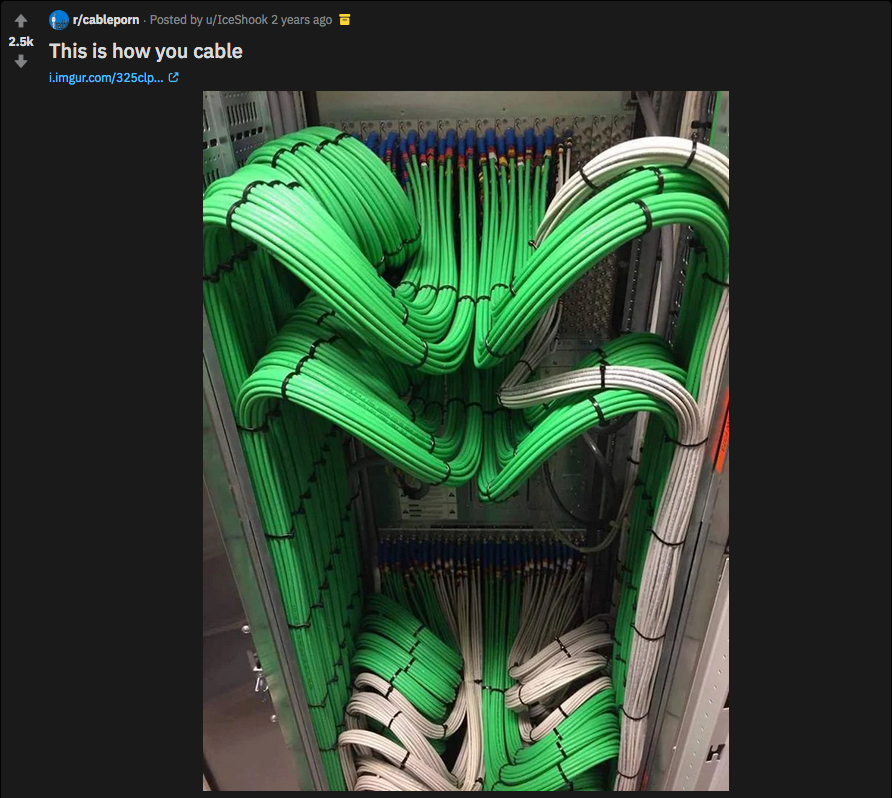
"Sneak-peeking" inside of a data centre makes its uncontrolled "subcultures" appear under a brighter light. On Reddit, there is a thread with almost 200,000 subscribers called r/cableporn. This is the virtual room where all the aficionados of well-organized cable management gather. On top of home cabling arrangements and other various settings, most of the posts are pictures of well-organized server racks from data centres.
This is the virtual room where all the aficionados of well-organized cable management gather and share their passion
The common patterns emerging from this kind of post is a representation of an unspoken trend that developed inside the server rooms. The aesthetic value of such images speaks to a different audience than the one addressed by advertising strategies.
The posts are made by people that have access to the usually unmanned zones of the data centre, and, despite all, they manage to collect and share aspects to share in a larger community.
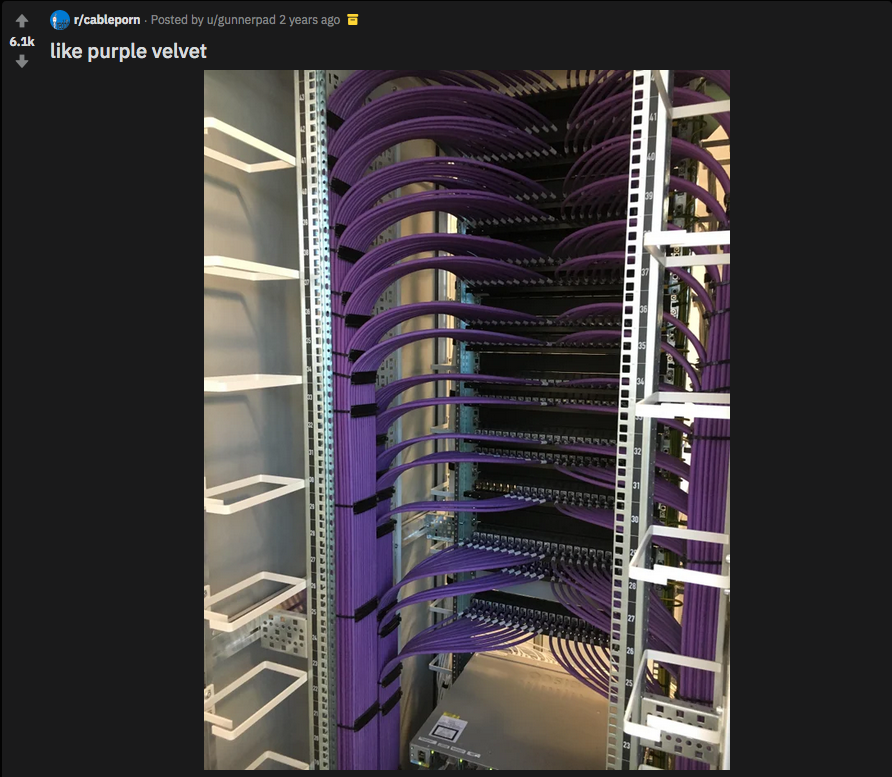
In this community, the priorities are altered. Nobody cares about which data centre you worked for or what fancy equipment you got to use. The only value is to have made a beautiful cable management system, be it at home behind the screen of your TV or in one of Google’s data centres.
The aesthetic of the data centre is thus made by these people as much as the architectural firms that style its waiting rooms. These technicians are the real designers of the server room, expertly shaping and organizing every single cable of the thousands present.
Navigating through r/cableporn, one starts to notice individual tastes and approaches and pride in craftsmanship in the signature arrangements.
At the other extreme of the spectrum lies another subreddit, r/cablefail, which, needless to say, is a painfully ironic collection of how cable management should not be done. As much as the former example, in this community, passion and ironic criticism become the core of the shared content.
Excerpt 3: A CYBERNETIC FOREST
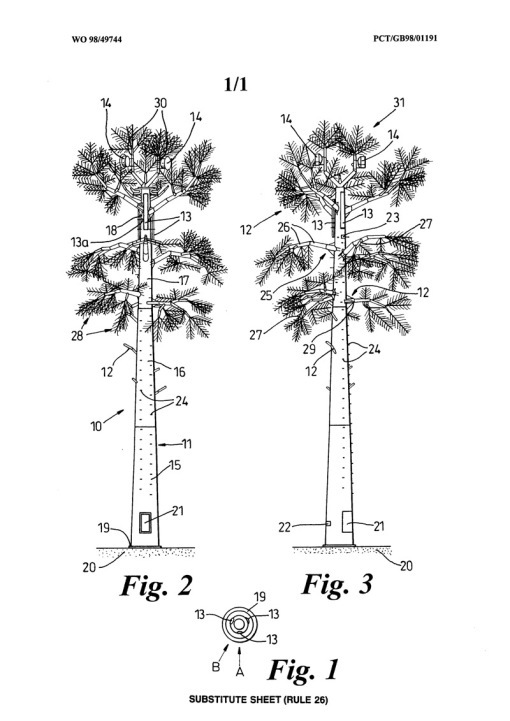
Metaphors are just the starting point of the correlation that has been created between the natural and the digital realms. Here is a list of some of the most common terms taken from the former and applied to the latter:
cloud
stream
log
data lakes
server farms
data-hungry species
web spider
The bucolic imagery goes on. It is a unique realm worthy of deeper analysis on its own.
In addition to these popular metaphors, the data centre industry also exploits the image of a perfect romantic version of nature to portray its own impeccable and flawless facilities. It is, in fact, not that strange to see photographs or digital renderings of data centres immersed in natural landscapes, generating visual contrast with the surroundings but seemingly made to fit within them, as the next step towards a new natural landscape in the 21st century.
The antenna-trees also reflect local flora traits, as they mimic the nearby palms trees, cacti, pines and others
This quest to make infrastructures invisible and in frictionless harmony with the environment has resulted in, among other phenomena, the widespread trend of antenna-trees. These could easily be imagined as the depiction of the forest ‘filled with pines and electronics’, as they literally are electronic trees.
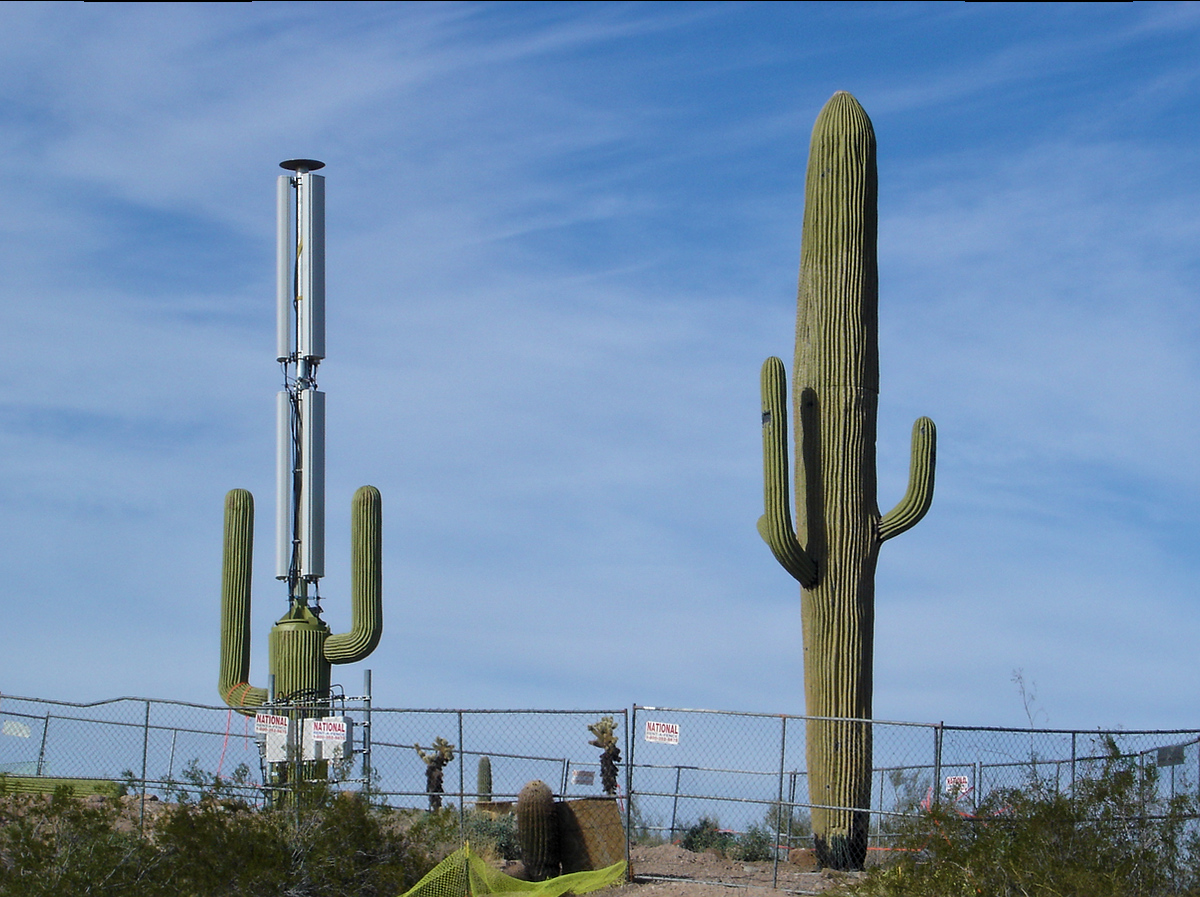
In the effort to reduce the visual impact of antennas and cell towers, usually piles of grey/white meaningless shapes attached to high steel poles, companies started trying to blend them in with the surrounding nature, resulting in green-painted cell towers hidden within brushes of fake leaves and bark.
Mainly spread across the US landscapes, the antenna-trees also reflect local flora traits, as they mimic the nearby palms trees, cacti, pines and others.
The cybernetic forest also includes another type of smaller artificial plant, specifically bright orange flowers, scattered across the fields. They are the markers used to signal that there is a fibre optic cable buried beneath them, which also prohibit any kind of digging in the area.
What is running beneath the orange flowers are the roots of our forest. Fibre optic cables running for thousands of kilometres below the ground and underwater to physically connect different continents with each other, making a worldwide network possible.
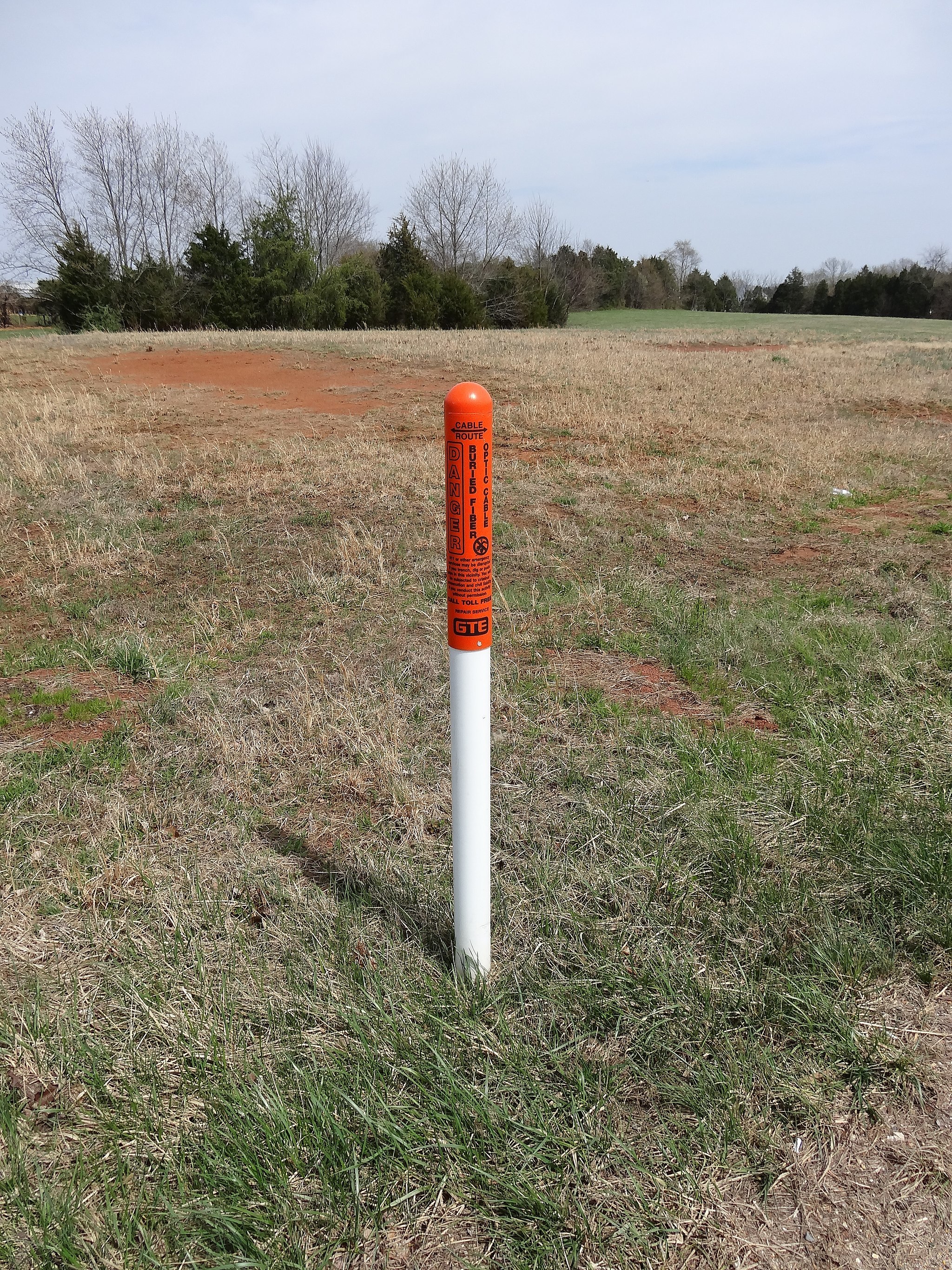
The section of these roots is similar to the one of a tree trunk, with a series of concentric rings that, instead of keeping track of age, represent all the different materials and functionalities needed to let the nutritional substances (data) spread across the world’s forest.
The history of these roots is coincidentally intertwined with the use of a real tree, the Palaquium
gutta. It grows in the lowland forests of Sumatra, Java and Borneo, and its sap, known as gutta percha (Malay for percha sap), was originally used to make handles, tools and decorative items. When warmed up with hot water, it could be moulded and hardened as it cools down, therefore making it a very similar material to rubber and latex.
However, it presented a significant chemical difference which, around 1850, captured the attention of telegraph companies struggling to find the best option to create transoceanic undersea cables.

The gutta percha, in fact, allowed them to wrap the cable’s copper in a durable and practical insulating layer, solving the problem of failing cables wrapped in tarred hemp and rubber.
This led to a submarine cable craze that made the global cable network grow from 15,000 nautical miles in 1866 to 200,000 in 1900.
Unlike rubber, which can be harvested from individual trees for decades, Palaquim gutta plants had to be felled, only to gather 300g of sap from a mature 18m tall tree. The demand of gutta percha between 1850 and 1930 became insatiable. It ended up destroying entire lowland forests in Indonesia and Malaysia, felling millions of trees, until the amount of gutta percha needed to satisfy the endless telegraph growth became far greater than what could be realistically extracted.
The greedy appetite of the telegraph industry moved on to other similar plants, leaving Palaquium gutta trees now almost extinct worldwide.
Except 4: A DEER IN THE DATA CENTRE, A SHARK CHEWS THE INTERNET
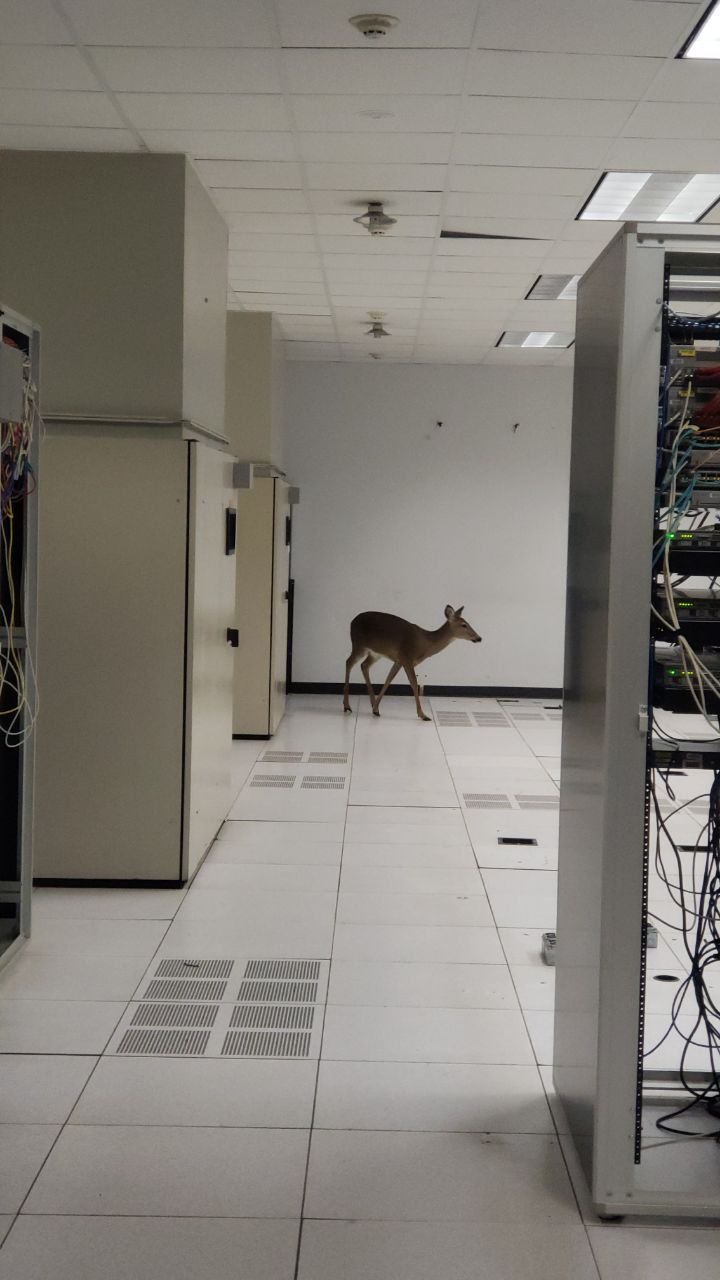
Looking through the lens of other alternative access points, the mutual trading of places between nature and technologies becomes even more evident.
Apart from the data centre microcosm absorbing symbolic keywords, inspiration and materials from nature, the natural world finds its way inside of it as well, breaking the barriers that separate them.
It was raining in the data centre
The most striking example of all was when an actual cloud formed inside a Facebook cloud facility. Real rain started falling in the server room, damaging part of the hardware and leading to heavy-duty protection measures to secure the rest of the equipment from future weather conditions.
‘Jay, there’s a cloud in the data centre,’
‘What do you mean? Outside?’
‘No, inside.’
It was raining in the data centre.
Despite all the effort and highly developed technologies used to evaluate the perfect interior conditions for the servers to run as smoothly and productively as possible, some side-effects might come by surprise.
In this case, the ‘weather event was precipitated by the use of a new type of cooling system (the chiller-less system), which had broken the hermetic seal of the server farm. Suddenly the building was not set apart from the outside environment—instead, it was breathing, exchanging air with the local climate. The Prineville facility was built complete with intake and outtake vents, which granted it a porosity somewhat unique in 2011.’
Another example of a loosening of the separation between the so-called "white spaces" (spaces allocated to host IT equipment) and the outside world was the day when a deer broke inside the server room of an unnamed data centre.
This is not the only case where animals disrupted the inner equilibrium of the data centre
Through a hole in the wall, the animal broke past the security measures and reached the core of the facility, playing hide and seek with the staff between the server racks before the local Animal Protection team was called.
DIY phone videos of the scene spread quickly across social media platforms, generating all sorts of ironic comments and memes.
This is not the only case where animals disrupted the inner equilibrium of the data centre. In fact, according to Chris ‘Space Rogue’ Thomas, founder of the CyberSquirrel1 project
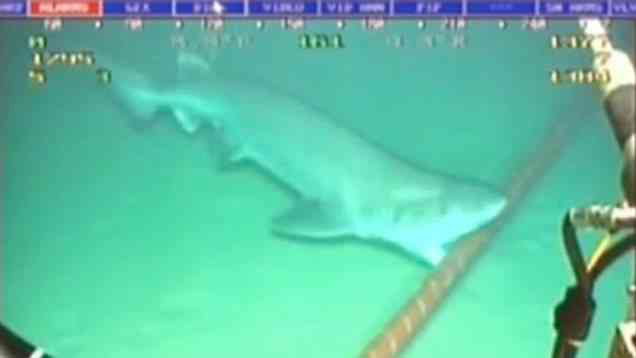
In a similar fashion, submarine cables used to transmit data across the oceans are designed with extra protective layers to resist the sharp teeth of curious sharks trying to chew them. Nonetheless, there might be a chance of the global internet being taken down by a group of sharks.
The images above show Celli's Graduation project, Cloud Zoo. It is an interactive installation in the form of a semi-fictional diorama that functions as a collateral reading of the Cloud’s structure through its surroundings.